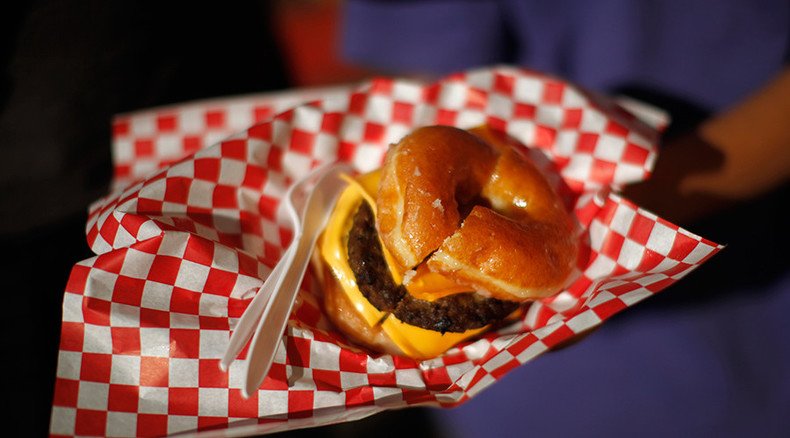A new government report shows that over a third of US children and teens eat fast food daily. More than 12 percent obtained nearly half of their daily diet from fast food, according to the Centers for Disease Control and Prevention.
“I can’t say I was surprised,” said Cheryl Fryar, one of the study’s authors, to the Guardian.
On any given day, 34.3 percent of American children and teens between the ages of two and 19 eat pizza, fried chicken, tacos or some other dish prepared in a fast-food restaurant, according to data collected by the CDC and published on Tuesday.
Of that group, 10.7 percent of children and teens obtained 25-40 percent of their daily calories from fast food – and a staggering 12.1 percent obtained more than 40 percent of their daily calories from fast food. The report found the results were equivalent for boys and girls, and cut across income levels. About 11.5 percent of those surveyed were close to poverty and 13 percent were from the higher end of the economic spectrum.
The report did not provide calorie totals, but ABC News reported that separate government research suggests kids consume about 1,900 calories a day. That means kids average about 245 calories each day from fast food. That's about the equivalent of a basic McDonald's hamburger.
A paper published in the Journal of the American Medical Association in 2013 found that lower fast food prices are associated with higher consumption, particularly for middle and high school youth. The paper also found that fast food restaurants are clustered around schools, particularly around high schools in lower income neighborhoods.
One significant difference in the report had to do with age. Overall, children between the ages of two and 11 were much less likely than adolescents between the ages of 12 and 19 to dine on fast food. On a typical day, 8.7 percent of the younger kids ate fast food, compared with 16.9 percent of older children. That pattern was seen regardless of gender, race or ethnicity, weight status or family income, the researchers found.
While the report found a slim distinction between girls and boys, where researchers did notice a difference was in fast food consumption according to race and ethnicity. Asian-American kids were less likely than their peers to visit a fast food joint – only 8 percent did so on any given day, on average. That compared with 11.2 percent of Latino kids, 13.1 percent of white kids and 13.9 percent of African-American kids.
The researchers speculated that fast food had not caught on as much in Asian-American households because these families were not as assimilated into the US lifestyle, including its eating habits. Some 27.4 percent of Asian children in the US were born overseas, compared with 19.7 percent of Latino children, 2.5 percent of whites and 1.9 percent of blacks.
According to the CDC, childhood obesity has “more than doubled in children and quadrupled in adolescents in the past 30 years,” and consumption of fast food has been linked to weight gain in adults. Fast food has been associated with high caloric intake but poorer diet quality.
The new report did find, however, that 65.7 percent of children and teens consumed no fast food on a given day.
To collect data for the study, the CDC surveyed about 3,100 children – or their parents – to find out what they ate over the previous 24 hours throughout 2011 and 2012.

